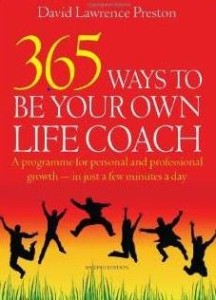In the past, intelligence was seen as something inherited in fixed amounts which couldn’t be altered. Some people were thought to be more creative than others because they were born with special talents.
Nowadays, we know that the brain has two parts, a left and right hemisphere, each with its own special functions. This discovery thirty years ago changed the entire foundation of psychology, neurology and education.
In broad terms, left brain activity is related to thinking (the ‘cognitive’ domain) and right brain activity to intuition, emotion and creativity (the ‘affective’ domain). To develop creativity, therefore, we must make more use and better use of the right brain. Then we tap into the same resource that great men and women down the ages used to fashion great works of art, music and sculpture and major scientific discoveries.
Most people have a tendency to favour one hemisphere or the other, but for many activities we rapidly alternate between the two.
Some activities are predominantly left brain based: reading, speaking, calculating, computer programming etc. Others mainly utilise the right brain, for example, drawing, playing music, dancing, and long-term memory. The creation of new ideas is a right brain function; evaluating and developing these ideas is a left brain task. Sometimes (e.g. creative writing) the use of left and right brain switches so quickly that it is impossible to tell which is being used.
When both sides are working together and contributing equally, the brain performs at its optimum level.
Are you more left brained or right brained?
Do you tend to prefer to think logically, take things one at a time, step by step, analyse, calculate and use words?
Or do you process things more emotionally, think in pictures, use colour, ‘feel’ and daydream?
Or both equally?
You can develop both sides of your brain
Long ago, Professor Robert Ornstein of the University of California discovered that people who had been educated to predominantly use one side of the brain had great difficulty in using the other. He also discovered that when the unused side of the brain was stimulated, the result was a vast increase in the overall ability of a person – in the region of five to ten times.
To improve your creative mind-power, therefore, first find out which side of your brain is under-used, then concentrate on developing that side.
For many of us the right is the weaker. This is because our schooling encourages us to make more use of the left brain. Politicians stress the importance of the ‘3 R’s’ – reading, writing and ‘rithmetic. We are encouraged to think about the world in words and numbers. Art, music, dance and more imaginative pursuits are pushed to the periphery.
The balanced use of left and right brain can help you to:
- Become more creative
- Learn more quickly
- Improve your memory
- Solve problems faster
- Improve communication
- Be more intuitive
- Understand body language
Many of the great artists and inventors had the ability to utilise both sides equally. They appeared to tap into a source of inspiration beyond their contemporaries. What were they tuning in to? Some psychologists believe it is their own unconscious minds; others that it is the Collective Unconscious of all humankind; still others that it was some form of Universal Consciousness.
Whatever it was, it is something to which we all have access through the right brain. However, we usually receive only the germ of an idea from there and must use our more structured left to develop it. The right hemisphere is a rich source of inner wisdom but you have to trust it. It’s a quiet voice, a subtle feeling. Tune in. It’s like having a wise being inside you, always on hand to offer guidance and support.
Get started! If you are predominantly left-brained spend more time on activities which utilise the right brain. Try to avoid analytical or calculating thoughts. Allow yourself to daydream. After one month, review your progress. What difference has this made to your life?
©David Lawrence Preston, 7.4.2016
Follow me on Facebook and Twitter @feelinggoodatt
How To Books, 2004

Leave a Reply